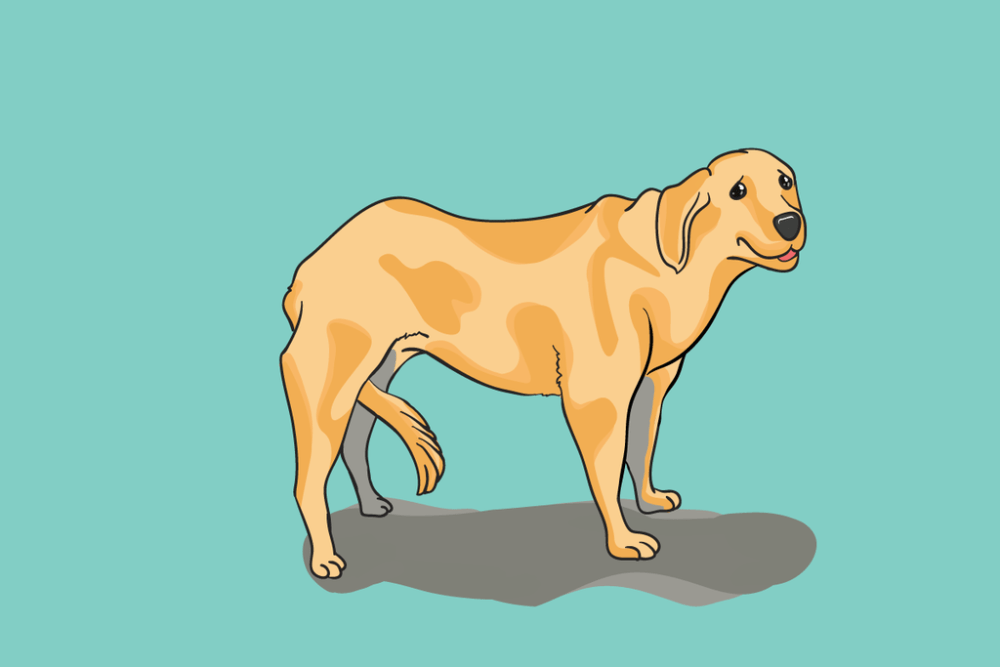Did you know that wolves and wild dogs don’t often communicate by barking in the wild? Barking seems to be a form of communication dogs use just for us – their noisy human friends.
Your dog has so many things to tell you, important things like “I love you” and “I’m hurt!” If you don’t speak dog, you could be missing out on a lot of need-to-know information.
Buckle up for a crash course in canine cues to make understanding your best friend a little simpler!
1. Eyes Open Wide, On You

Your dog is looking for your attention. With his ears perked up and mouth relaxed, it’s likely he’s in a good mood and wants something from you. He might want treats or a scratch behind the ears! Keep an eye on him to see what he does next. Changes in body language can help show you what he’s asking.
2. Yawning

This seems like a no-brainer, but a dog yawn doesn’t always mean what a human yawn will. Look for this one when you’re out in public because it could mean your furry friend is grumpy or uncomfortable and ready to go home. This can also be a sign of anxiety. Yet, if you yawn first and your dog copy-cats, it could just mean he feels close to you. Yawns are contagious, after all!
Related: 6 Signs Your Dog Trusts You
3. Licking His Own Face

It’s a blink-and-you’ll-miss-it gesture. If your pup is licking his face, he could feel pressured, nervous, or stressed. Of course, rule out the possibility of there being peanut butter or something equally tasty on his snout! Some other signs of appeasement or stress are lowering body, panting, or giving a “whale eye” expression.
4. Tail Lowered, Wagging

Not all tail wags automatically mean happy. Check the speed of your dog’s tail. Think of a slow wag as your dog being on “standby.” He’s not trying to communicate anything past watching you for cues and what to do next. Where are we going? What are we doing? You’re the boss! Tail wags can be misinterpreted, so learn the differences in your furry friend’s wags.
5. Tail Up, Trembling

We usually associate trembling with fear, but that isn’t always the case with your dog’s tail. Your dog may not be sure who is alpha, here. This could mean that your dog wants to take the lead. It’s not an aggressive challenge, but you may want to assert your authority. Even if your dog wouldn’t hurt a fly, staying in control is important for your dog’s safety and the safety of others.
6. One Paw Up

Your dog isn’t trying to strike a gentleman’s agreement, and he isn’t asking you to shake. This could mean that he needs to ask you for something. When was the last time he was fed? Are there treats out on the counter? Does he need water? He might not be able to tell you exactly what it is, but check that he has the necessities.
7. Belly Up

Paws in air, belly up? Your dog trusts you and wants you to know it! What better way to let him know you understand and deserve his trust than with a good belly rub? He’s earned it!
8. Showing Teeth, No Snarl

There’s no growling, but there are teeth. Your dog knows that sharp teeth are intimidating, with or without the snarl. He’s protecting something – maybe a toy or a food bowl. Use caution because he’s warning you. If this is a behavior you’d like to discourage, seeing a trainer might be a good idea.
9. Tail Tucked

A tucked tail could mean your dog is scared. Is there an unfamiliar person or animal in the area? Try to remove the source of fear or move your dog away from it. If this is something your dog does frequently, it could mean pain. If it’s a concern, definitely see your vet and let them know about the tail tuck. Other signs that your dog needs a vet could be scooting, tail chasing, and face rubbing.
10. Squinting, Blinking

Is it time to play? Your four-legged friend thinks so! Dogs often blink more often to show that they are friendly and not a threat. But if your dog is squinting a lot, you may need to have a vet check that there isn’t anything causing him pain. If he’s only squinting in the sun (especially if he’s a senior dog) you might want to have him checked for cataracts.
So, What Do Dogs Think About?
If you can’t understand your pup, then it might be time to speak fluent canine. By paying close attention to your dog’s actions, you might get a glimpse into his brain. His thoughts aren’t existential life-or-death questions. Instead, he’s probably thinking about food or toys. But even so, your dog’s wants and needs are important, so don’t ignore him when he shares subtle cues with you.
 Toledo, United States.
Toledo, United States.